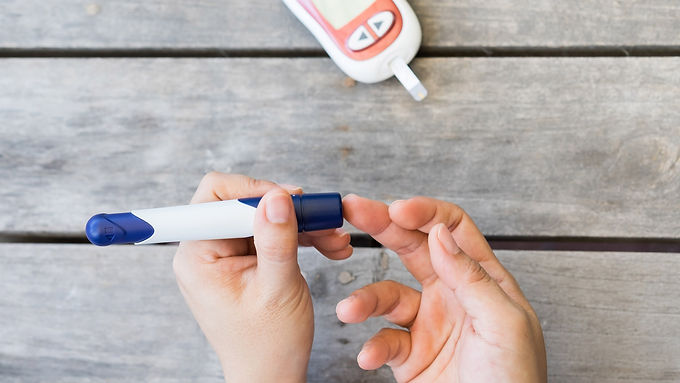WELLNESS & HEALTH
Age-Wise Blood Sugar Levels: Complete Healthy Range Guide
Publisher:
BloodArmor UK
19 de noviembre de 2025
Blood Sugar Levels play a central role in your overall health, energy, and daily performance. Your body depends on glucose as its main fuel source, and stable levels ensure your organs—especially your brain—function properly. But many people are unaware that Blood Sugar Levels naturally change with age, lifestyle, and metabolic health. Understanding what is considered “normal” at each stage of life can help you stay healthy, prevent complications, and make smart daily choices.
In this detailed guide, you’ll learn what normal Blood Sugar Levels look like across age groups, why these numbers matter, and how to keep levels balanced throughout life.
Why Blood Sugar Levels Matter
Blood Sugar Levels determine how well your body converts food into usable energy. When levels stay balanced, your body feels energized, alert, and healthy. When they rise or fall too much, your body struggles to function smoothly.
Stable Blood Sugar Levels support:
- Consistent energy
- Clear thinking
- Healthy metabolism
- Balanced appetite
- Better long-term wellness
Whether you’re young, middle-aged, or a senior, learning about your ideal range can help you take control of your health.
Normal Blood Sugar Levels by Age
While general guidelines apply to most people, normal Blood Sugar Levels can differ depending on age. Below is a clear breakdown for fasting levels, after-meal levels, and general ranges for different age groups.
1. Children (0–12 Years)
Children tend to have faster metabolisms and higher activity levels. As a result, Blood Sugar Levels may fluctuate more quickly.
- Fasting: 70–100 mg/dL
- After meals (1–2 hours): 90–140 mg/dL
Children need consistent meals and snacks to maintain steady energy. Irregular eating or excessive sugary foods can cause quick spikes or drops.
2. Teenagers (13–19 Years)
Hormonal changes during puberty can influence Blood Sugar Levels. Teens may also experience stress, irregular sleep, and inconsistent eating habits, all of which impact glucose.
- Fasting: 70–105 mg/dL
- After meals: 100–145 mg/dL
Encouraging balanced meals and regular hydration can help teens maintain their levels.
3. Adults (20–59 Years)
In adulthood, Blood Sugar Levels stabilize for most people—unless affected by weight changes, stress, or lifestyle choices.
- Fasting: 70–110 mg/dL
- After meals: 100–150 mg/dL
This is also the age range where lifestyle factors such as physical inactivity, processed foods, and high stress can begin to disrupt Blood Sugar Levels. You can place a useful domain link here naturally:
For more health management tips, visit [Official Website].
4. Seniors (60+ Years)
As people age, metabolism slows down. The body may not use insulin as efficiently, making slightly higher Blood Sugar Levels normal for older adults.
- Fasting: 80–120 mg/dL
- After meals: 110–160 mg/dL
However, maintaining stable levels is still important for energy, focus, and overall wellness.
Factors That Influence Blood Sugar Levels
While age plays an important role, several other factors affect how your body manages glucose:
1. Lifestyle Habits
Diet, physical activity, and sleep are major contributors. A balanced routine helps keep Blood Sugar Levels stable.
2. Stress Levels
High stress releases hormones that can increase glucose levels.
3. Eating Patterns
Skipping meals or overeating sugary foods leads to spikes and crashes.
4. Physical Activity
Even light daily movement helps your body use glucose more efficiently.
5. Hydration
Water supports optimal metabolic function and helps regulate Blood Sugar Levels.
Signs Your Blood Sugar Levels May Not Be Normal
Recognizing early signs of imbalanced Blood Sugar Levels can help you take action before issues develop.
Common symptoms include:
- Frequent thirst
- Unusual fatigue
- Sudden hunger
- Slow healing
- Irritability
- Blurry vision
- Difficulty concentrating
If these symptoms occur regularly, monitoring your Blood Sugar Levels more carefully can help you understand what’s happening.
Simple Ways to Maintain Healthy Blood Sugar Levels
Maintaining ideal Blood Sugar Levels does not have to be complicated. Small, consistent habits have the biggest impact.
1. Focus on Balanced Meals
A combination of fiber, healthy fats, and protein helps slow glucose absorption. Examples include:
- Whole grains
- Fresh vegetables
- Lean proteins
- Nuts and seeds
- Beans and lentils
These foods keep Blood Sugar Levels steady for longer periods.
2. Choose Low-Glycemic Foods
Low-glycemic foods release energy slowly. They help prevent sudden spikes. These include:
- Berries
- Apples
- Oats
- Leafy greens
- Chickpeas
- Quinoa
3. Move Daily
Even simple physical activity such as walking for 20–30 minutes can significantly improve Blood Sugar Levels. Regular movement helps your muscles use glucose efficiently.
4. Stay Hydrated
Water helps flush excess glucose and supports better metabolic efficiency.
5. Prioritize Good Sleep
Lack of sleep affects insulin sensitivity. Aim for 7–8 hours each night to promote stable levels.
6. Manage Stress Naturally
Gentle practices like deep breathing, meditation, nature walks, and stretching help regulate hormones that influence Blood Sugar Levels.
Healthy Blood Sugar Levels Support Long-Term Wellness
Understanding Blood Sugar Levels by age is essential for maintaining long-term health. Whether you are a teenager, adult, or senior, balanced glucose helps your body function at its best, improving energy, focus, and quality of life.
If you want to explore more helpful wellness insights, here’s another natural link placement:
Learn more about daily health support at [BloodArmor UK].
Final Thoughts
Blood Sugar Levels naturally shift with age, but staying aware of your ideal range can help you maintain health, prevent complications, and feel your best every day. Regular monitoring, mindful eating, physical activity, and balanced habits all play a key role in keeping your levels steady.
By understanding your body and making simple adjustments, you can protect your wellness at every stage of life

Health
Vibnet Blog Posts:



